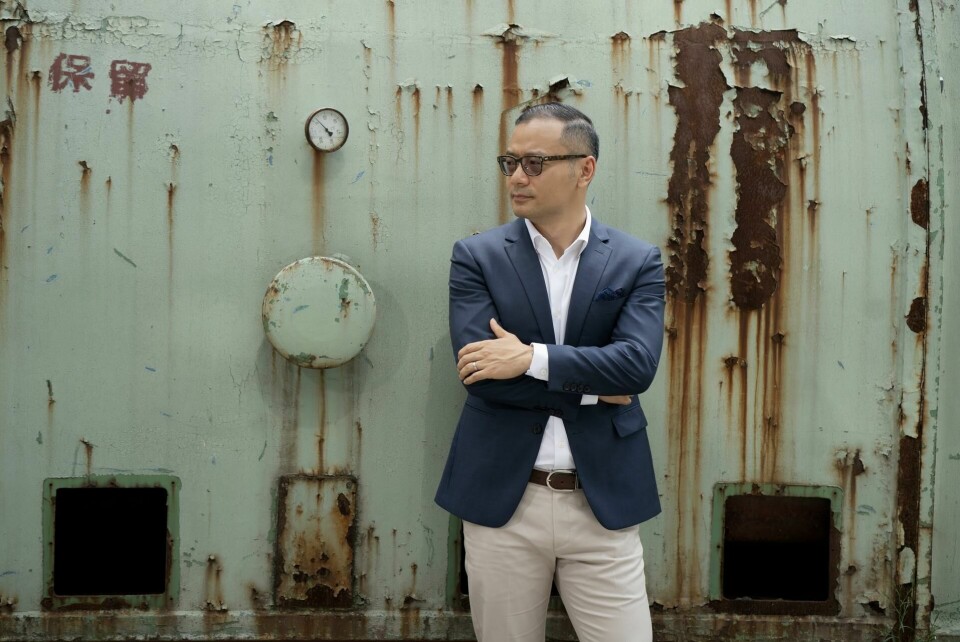
Designer Interview: Fan Zhang, GAC
”Most of the time, we concentrate on how it works when it is moving. For some young people, maybe the car is the only property they can afford in a city… so we explored how they can make the car their own”
GAC Design has undergone a big expansion in the last two to three years, especially globally, setting up the Los Angeles studio and then the Shanghai studio. Also, we have hired a lot of experienced international designers to strengthen the core competence. Our aim, along with the ambition of the whole company, is both within China and going to other car markets in the world, for example America, and we in Design are the pioneers: we have to go there first to test the water and come up with solutions and guidelines.
I would say right now within GAC research and development, design has become the driving force behind the development of the cars. The chairman of R&D Center, Mr. Wang Qiujing, really understands the value of design and gives us a lot of support. We can actually define what kind of products are built, or how these products could evolve, and what kind of experience we can bring to our future customers. Those questions are gradually becoming the responsibility of designers.
In 2015 we lost 15 designers, mostly to start-ups, as did many other companies. These designers were young, with five to six years of experience, but had been with us for quite a time and had designed some nice cars at GAC; they were offered very good positions. At this time, I started considering, ‘what can we do better to save this situation, to make it right?’ So what is the next step? The young generation in China are very eager to learn, to develop their skills and experience. So we now do our best to provide more for them within our team!
We tackled this in a few ways: firstly by sending designers out to auto and furniture shows, and then to international schools for further study. Last year, we sent two designers to CCS for a year’s study, and have sent designers to other workshops in universities in Finland and America to broaden their horizons. Setting up studios in LA and Shanghai gives the opportunity for international exchange. Another internal initiative was ‘free talk’, a motivation practice: every time, six employees within Design present to the group about the things that inspire them, to stimulate some new ideas. We do that every week. And we created a GAC think-tank on the internet, not just for internal use, but for anyone interested in us. There are two parts: one is where we show what we have done, and what we are working on, and the other is a ‘free talk’ part where whoever has ideas can contribute and interact with us.
I try to inspire the younger generation to work in, and love, this industry. I tell them that it is not just because car design is cool, but that the value and importance of this industry is in how it can change people’s lives. We try to provide internships, and sponsor projects with schools in China and at CCS, in all different categories, not just styling or interior design. We have started doing a design competition to inspire students as well. We wanted to do it differently: we broadcast the whole process live online, showing how we select the winning project – and this live stream has had 6,040,000 simultaneous views.
After a competition ends, we select some students, normally eight, to come to GAC and further develop their projects for another three months, and we provide the coaching at each step. They end up with very refined models and can discuss the form, dynamics, how they adjust the shape and manage the surfacing, and how they apply colour and materials. Even if they don’t win, they still gain. Throughout, we post documentaries online and students can watch and follow the whole process. This is not just a contest, the process is important too.
We keep doing show cars, at least one each year, sometimes two, and most are running prototypes. The Enverge concept launched last year in Detroit really enlightened some designers’ visions of us – after its launch, we got a lot of emails and messages of interest from designers worldwide, asking for a job. Enverge showed our future approach, our original interpretation of how a car can evolve with an EV platform. A lot of the character and aesthetics on that car are quite new, and this was recognised by young designers around the world. It was a milestone.
The iSpace concept shown in Guangzhou [2017] was a very challenging project as it had a non-traditional approach to car design. We wanted to make an interactive experience in the car work. The seats fold down and combine with the rear seat to make bench seating and a bed; the IP has a large flat screen that becomes a cinema experience when the car transforms from ‘drive’ to ‘home’ mode. We explore in it how to transfer from a driving tool to a comfortable, moveable living space, and – an important idea – how to utilise a car when it is parked.
Most of the time, we concentrate on how it works when it is moving. For some young people, maybe the car is the only property they can afford in a city, apartments are expensive, so we explored how they can make the car their own. Previously the automotive industry just concentrated on one product, horsepower category, proportions, etc., but more and more, I think the industry and expectations evolve, and in future we need to talk about service and experience, not just about one product. If we can make the whole service seamless, we are going to be the winner.












